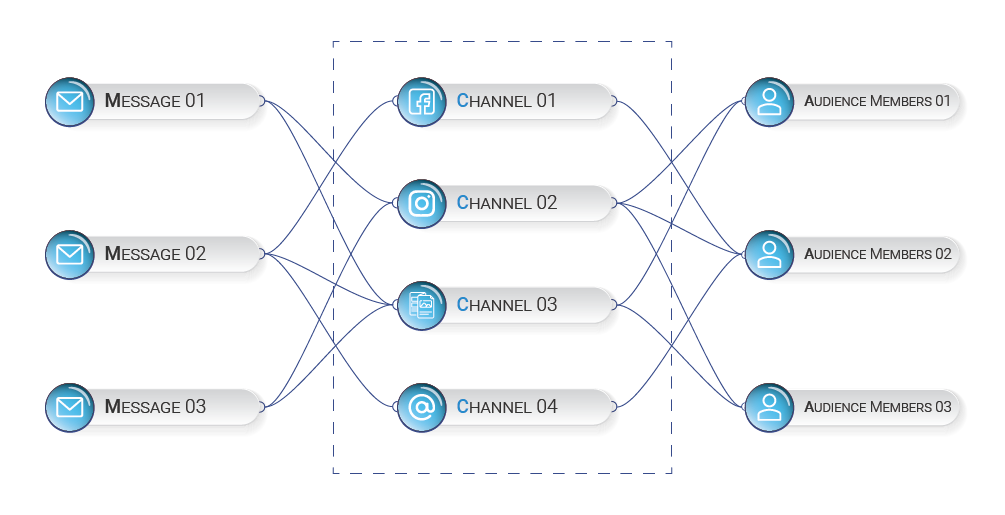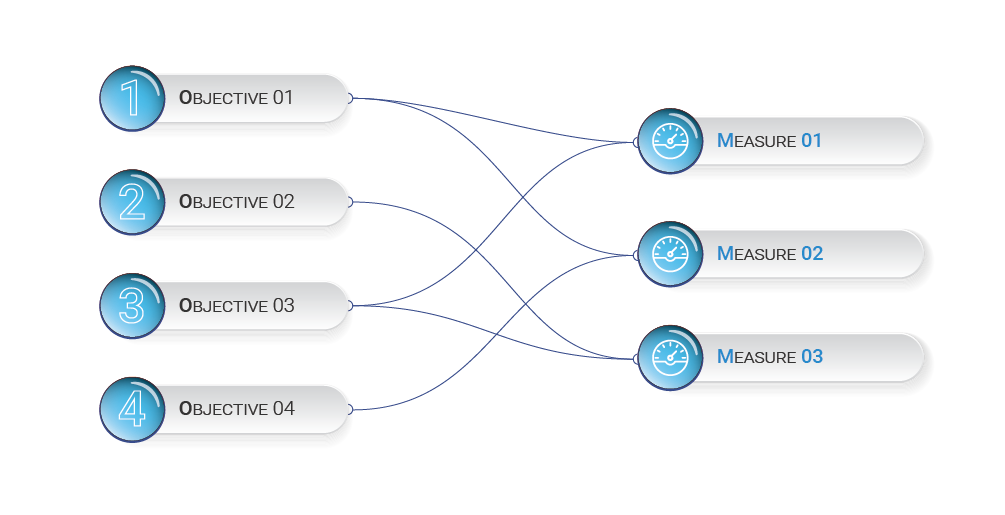“A comprehensive communication strategy is fundamental to ensuring that your business has the best chance of inspiring the action needed to bring your vision to life. “
The value of that statement is self evident but it often leaves entrepreneurs asking questions on how to develop a communication strategy for their business”
We’ll be answering those questions in this 8 step guide to creating a compelling communication strategy for your business but first, it’s important to note that a communication strategy like any other strategy requires contemplation around the subtleties and nuances of your business’s context. It’s not about only taking what has worked for others and applying it to your own business. Fortunately the creation of a communication strategy benefits from a refined creation process. When embarking on this process it’s beneficial to understand the components of a communication strategy and the role these components play in driving results.
Here are the steps to developing a communication strategy:
- Analyze your business
- Define the objectives of your communication strategy
- Specify your target audiences
- Capture your core messages
- Consider the channels you will use
- Decide the measures of success
- Plan & Create the communication Pieces
- Prioritise and Budget
Step 01 – Analyze your overall business strategy
At the start of the creation of your communication strategy you should start by analyzing your overall business strategy. Whether you’re trying to grow your business by penetrating new markets or by expanding your current offering, the success of these strategies would largely depend on the effectiveness of your communication. Your communication strategy should feed off of your overall business strategy to support objectives and avoid pitfalls.
It makes sense then, that your first step in the development of a bespoke communication strategy requires you to analyze your overall business strategy. What you are looking for are the Accelerators and Inhibitors of your strategy.
These two components will form the departure point from your overall business strategy into your communication strategy. By identifying the elements within both your Accelerators and Inhibitors you have the subject points that you need to address with your communications. It’s important to focus on what is going to push your business forward and what is currently holding your business back to ensure your communications have a real impact on your business.

Step 02 – What is the objective of your communication?
To adequately address the Inhibitors and Accelerators, the next component of your communication strategy will be the objectives that you want to achieve with your various communication initiatives. Your objectives are the measurable results you want to bring to life as a result of your communications. The objectives work to diminish your inhibitors and promote your accelerators.
These can be anything from entering a specific market by the end of the quarter to developing a specific number of new product ideas from your customers. Your objectives can be as high level or as granular as you believe your overall business strategy requires. It’s important to ensure that your objectives are clear and specific. Making use of the S.M.A.R.T approach will help in the development of your objectives.

Step 03 – Who is the Audience you are communicating with?
Now that you know what you are trying to achieve, you can address the next component in your communication strategy. Who is the target audience for the communication? This is a vital component in a communication strategy as it plays a large role in the rest of the components.
When trying to define your audience, it’s useful to think about who will be responsible for bringing the results of the objective to life. Your audience can either be internal or external to the business. It’s important to remember that you need to be very specific when identifying your audience. A great way to achieve this is with the use of audience personas.
You can specify multiple audiences for each of your objectives or just one in particular. By defining your audience you define the perspective from which you will be reviewing the communication pieces you end up creating. It’s extremely powerful to consider your communications from the perspective of your intended audience and not from your own frame of reference.

Step 04 – What is the core message?
The next component takes into consideration the core message that will be shared with the audience. The message is informed by both the objective and the audience.
The best way to identify your core message is to decide what your audience needs to know in order for them to act in a way that will achieve the objective. Additionally the message needs to address your audience from their level of understanding.
It is important to keep your message as clear as possible with only one or two distinct points. This is because a communication piece with too many messages can cause ambiguity or confusion. You should also aim to have a message for each individual grouping of audience members and deliver those messages with their own respective communication piece.

Step 05 – What channels will be used?
The next component in your communication strategy is the channel you will use to deliver the message to your intended audience. A channel is the touch point with your intended audiences and can be anything from digital media to print collateral.
By defining the channels that will be used to deliver the message, you begin to assess how your audience will be engaging with the content. When defining the channel you have to ensure that the content delivered will be contextual and relevant to the mind-space of your audience on that specific channel.
Your message doesn’t need to be confined to only one channel. In our experience, the more channels you can effectively communicate your message through, the greater the chance you have of achieving the objective. However this does have a limit. It is not about blasting your message through every conceivable channel, but rather about packaging and delivering your message in various forms to ensure you are engaging your audience in their preferred context.

Step 06 – What are the measures of success?
The final component in the development of your communication strategy is the formulation of your measures of success. These are the elements you will monitor to determine whether your objectives are being met.
It is vital to include measures for success as this ensures your communication strategy is constantly being re-evaluated for its effectiveness. It’s important to ensure that your measures for success are specific to your objectives and don’t rely on the use of generic measures like engagement and impressions. The measures for success that you utilise should also be in support of your overall business strategy.
Try not to define too many measures as this will leave you tracking too many variables. It is best to group your objectives as far as possible and use measures that speak to multiple objectives. This way you are able to focus on what will truly make an impact in your business.

Step 07 – Plan & Create the communication Pieces
With these components now addressed you are able to jump into the planning and creation of communication pieces. In this step you are defining the most suitable communication method and developing a project plan for its creation and delivery. Your communication pieces are the arrow head in your communication strategy.
With that said, the communication pieces must take into consideration all of the components you have tackled above. The intention is to create visual communications that package the message in a way that the audience will actively engage with through the channels you have selected. Additionally the communication pieces must be created in such a way that they inspire the action required to achieve the objectives by positively influencing the metrics in your measures for success.
When planning your your initiatives you want to think of the most suitable way to package all of the components. This can range from something as simple as a brochure to something more complex such as a fully fledged campaign comprising of multiple communication pieces. By defining all of the components above you have the criteria against which you will validate your proposed communications.

Step 08 – Prioritise and Budget
Congratulations! With all the steps above completed, you are finally ready to execute and deliver on your strategy. In this step you need to prioritise the communication pieces that are going to have the most impact on your business.
To assess the impact the communications will have on your business, you need to assess them for their importance and their urgency. The most important communication pieces are the ones that are going to add the most business value in support of your overall business strategy. The urgent communication pieces are the ones that will lost their business value over time. Using a prioritization matrix or assigning weighted values will help in determining which communication pieces to tackle first.
With your communication pieces priotised you can now allocate your communication budget and distribute it over your priority communication pieces. The cost of creating a communication piece can have a broad range depending on the quality and time-frame of the piece. Ensure that you invest as much as possible into your highest impact pieces and still have an adequate budget available for the lesser yet essential pieces you have proposed.
